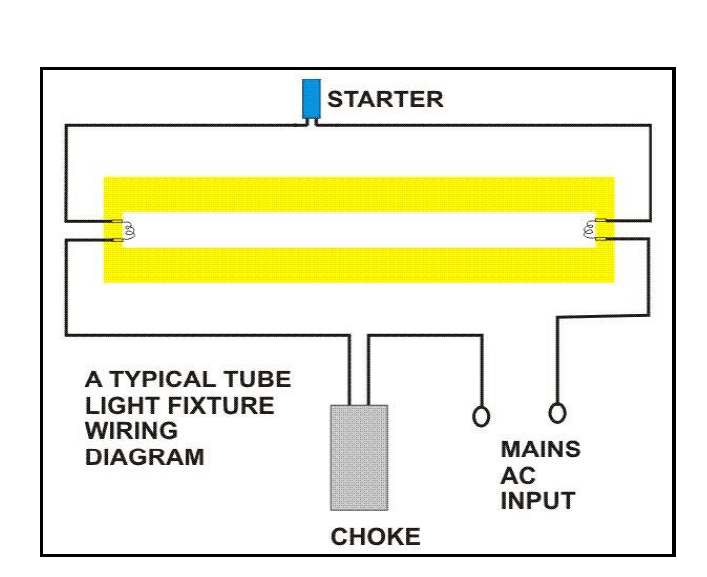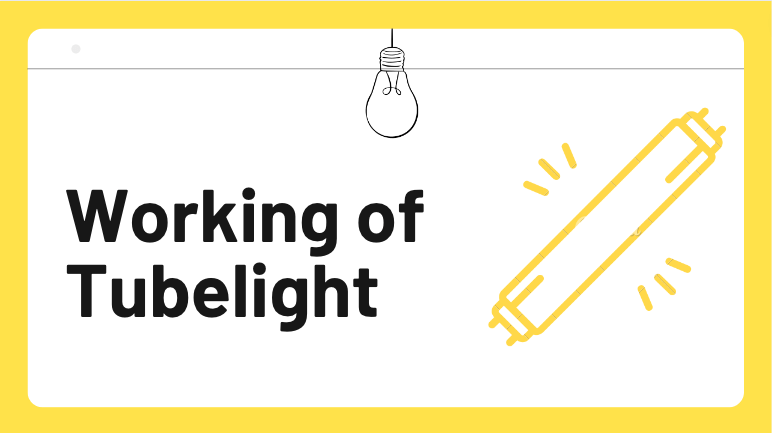Since childhood, you have seen tubelight or fluorescent lamps everywhere around you but have you ever wondered how tubelight works? Just by pressing a switch it lightens up and spreads light everywhere. Nowadays modern Led lights have been replacing tube lights but still, you can find tube lights everywhere.
Trivia – Peter Cooper Hewitt invented the first mercury vapour lamp in 1903, but it used to produce greenish light as the fluorescent coating on the tube was not there .
Table of Contents
ToggleConstruction of Tubelight
A fluorescent lamp basically consists of a long glass gas discharge tube. Its inner surface is coated with phosphorous and is filled with an inert gas, generally argon, with a trace of mercury. The tube is then finally sealed at low pressure with two filament electrodes each at both ends. These electrode filaments are used to preheat the tube and initiate rapid conduction of electrons between the two end electrodes. The main components present in tube light are –
- Choke
- Starter
- Filament
- Bi-metallic strip
- Phosphorus coating
How Tubelight works ?
The process initially requires a relatively high amount of power. The energy also converts some of the mercury from a liquid to a glass. Electrons then collide with the gaseous mercury atoms, increasing the amount of energy. As electrons return to their original energy level, they begin to release light.
However, the light they emit is ultraviolet, and not visible to the naked eye, so another step needs to take place before we can see the light. This is why the tube was coated with phosphorous. Phosphors will give off light when exposed to light. When exposed to ultraviolet light, the particles emit a white light which we can see. Once the conduction of electrons between the electrodes is complete, no more heating of the filaments is required and the whole system works at a much lower current

Working of tubelight explained
Here is one example of a tube light fixture consisting of a large heavy square “choke” or “ballast” and a small cylindrical “starter.”
Let’s try to understand how the whole system works. Please refer to the circuit diagram on the right as you read the following points:-
- The choke is in fact a large inductor. It consists of a long copper winding over iron laminations. An inductor by nature always has a tendency to throw back the stored current in it, every time the power through it is switched OFF. This principle of the choke is exploited in lighting a fluorescent tube light.
- When an AC voltage is applied to a tube light fixture, the voltage passes through the choke, the starter, and the filaments of the tube. The filaments light up and instantly warm up the tube.
- The starter is made up of a discharge bulb with two electrodes next to it. When electricity passes through it an electrical arc is created between the two electrodes. This creates light, however, the heat from the bulb causes one of the electrodes (a bimetallic strip) to bend, making contact with the other electrode.
- This stops the charged particles from creating the electrical arc that created light. However, now that the heat from the light is gone, the bimetallic strip cools and bends away from the electrode, opening the circuit again.
- At this point, the ballast or choke “kick’s back”, it is stored current, which again passes through the filaments and ignites the tube light once again.
- If the tube does not sufficiently charge up, subsequent kicks are delivered by the choke due to rapid switching of the starter, so that finally the tube strikes. After this, the choke only acts like a low impedance current limiter to the tube as long as the light is kept illuminated.
